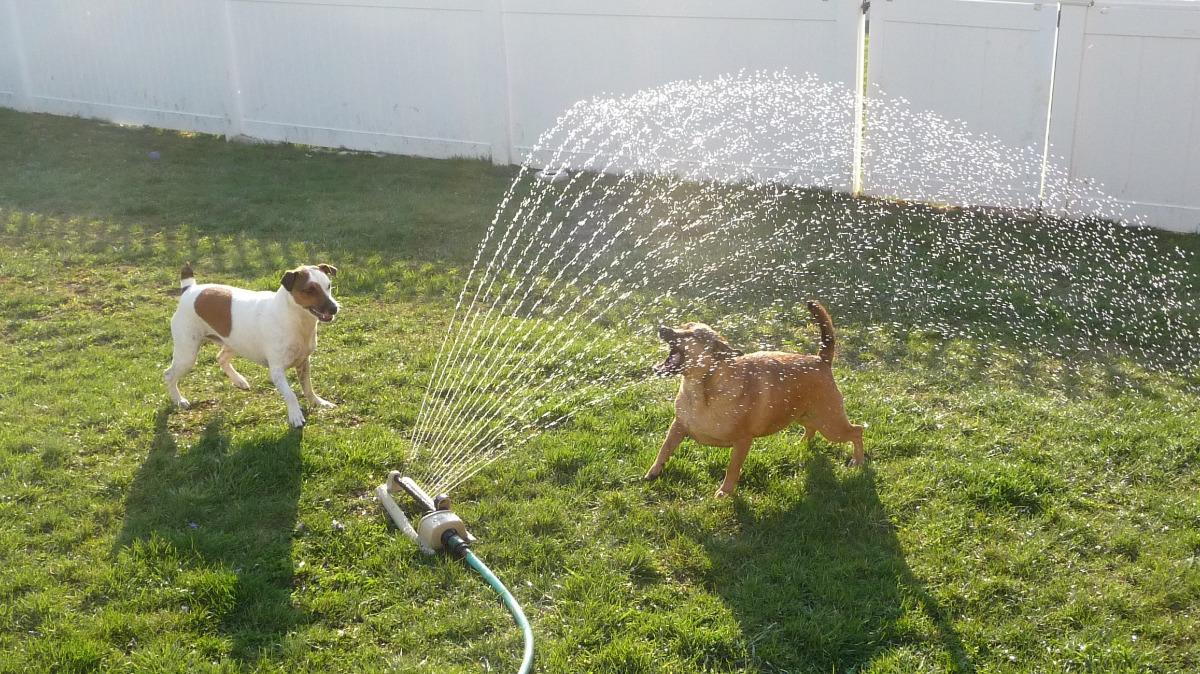Water Safety for Pets

- posted: Jul. 11, 2021
Water Safety for Dogs and Cats
In case you haven’t noticed, it’s hot out there, York County! Keeping cool this summer might include swimming in a pool, a lake or at the beach. If your four-legged friends are joining you in water-based activities, here are some tips to keep pets safe around water.
While dogs and cats have some natural instinct to try to swim if they find themselves in the water, not all dogs are good swimmers (think short-nosed breeds like French bulldogs or short-legged dogs like Dachshunds), and pets can easily drown if unsupervised. Just like children, pets should never, ever be left unattended at a pool or body of water. A dog or cat could accidentally fall into the water and, even if a good swimmer, he may become overwhelmed and panic, or if he cannot get out of the water, your pet could tire easily and drown. It only takes a minute for such a tragedy to occur. Keep your eyes on pets at all time at the pool, particularly if your pet has never been in the water or doesn’t know how to swim. It’s also a good idea to teach your dog how to get out of the pool via a ladder or some type of ramp if he swims frequently. Consider a motion activated pool alarm in case your pet accidentally falls in.
If you are taking your pet on a boat or to a lake or beach (or even for the first time in a pool), a life-jacket is a good investment. Even if your dog is a good swimmer, a life vest will help keep your dog afloat and most have a strap that will help you get your pet out of the water if he accidentally falls in.
You can also use the life vest in a controlled situation like a pool or shallow water area to help your pup learn how to swim. Don’t throw your dog into the water and don’t force her to go into the water if she seems afraid. Do teach your dog to swim by starting in shallow water, going into the water with her to help support her body and encouraging her to swim by enticing her with a toy. The AKC has good instructions on teaching a dog to swim found here: https://www.akc.org/expert-advice/health/teach-dog-to-swim/
Cats don’t generally like to swim, but some people do take cats on boats. If you are taking your cat on a boating excursion, you may want to get a life vest for your feline in case he accidentally falls overboard. Make sure your cat can swim and acclimate him to the boat before setting sail.
Natural bodies of water may pose other risks like snakes, snapping turtles and things like giardia and toxic algae so have an emergency plan in case your pet is ill or injured and don’t allow dogs to swim in or drink water with heavy algal blooms.
Dogs can also get sick if they ingest too much water—be it fresh, salty or chlorinated. Provide plenty of fresh water for your pup to reduce the urge for him to drink pool, pond or ocean water. If your dog starts vomiting, it could mean he drank too much water. Cut the swimming session short. Salt water and chlorinated water can be toxic in large amounts causing dehydration and neurologic symptoms. Seek veterinary care if your dog seems shaky or lethargic, vomits repeatedly or has a seizure.
Remember to take breaks and provide shade for your pet. Pets can be prone to both hypothermia if swimming for too long in cold water and to heat stroke on hot days.
Many dogs enjoy swimming and playing in the water. If you have a pool or if you frequently take your pet on a water craft with you, be sure to practice good water safety tips for you and your pet!
This blog brought to you by the Patton Veterinary Hospital serving Red Lion, York and the surrounding communities.
https://www.adventurecats.org/backcountry-basics/a-guide-to-boating-with-cats/
https://www.petinsurance.com/healthzone/pet-health/pet-safety/pets-and-drowning/
Location
Patton Veterinary Hospital
425 E Broadway
Red Lion, PA 17356
